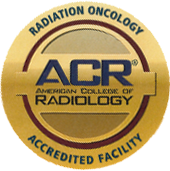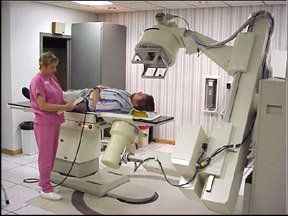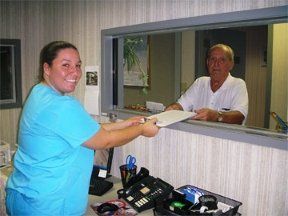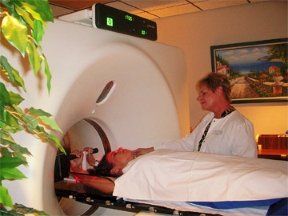Patient-Focused Radiation Treatment & Tomotherapy
Find out for sure whether radiation treatment and tomotherapy is right for you with full evaluations from Radiology Oncology Centers in Sarasota, Florida. Our doctors work closely with you to determine your needs, then create a personalized treatment plan that puts you in the best position to live a pain-free life.
Patient Referrals
Patients are generally referred for radiation oncology evaluations by their medical oncologist, surgeon, or personal physician. Self-referrals are also accepted and are often done for purposes of obtaining a second opinion.
Telephone Interview
The process starts with a telephone interview with the oncology center office staff to obtain the necessary medical records and insurance information. Our group participates in Medicare™as well as most HMO and PPO providers. Our billing office is available to assist patients with insurance and financial issues.
Information Questionnaire
Patients will be asked to fill out a detailed medical information questionnaire about their current problem as well as past medical history. This information is necessary to assist the physicians in developing a personalized treatment plan for each patient.
One-on-One Consultation
A consult will be arranged and the patient and family will meet with the radiation oncologist. At this time, a history will be taken and a physical examination will be done. Pertinent x-rays and scans will be reviewed. Discussions may take place between the physicians involved in the care of the patient. A plan of action will be made and discussed with the patient and family. Questions are encouraged and every attempt is made to make sure all issues are addressed. The reasons behind treatment recommendations as well as potential side effects and risks of treatment will be discussed in detail. Consideration may be given in certain circumstances to participation in a clinical trial.
Planning Treatment
Should radiation therapy be recommended, the next step is to plan the treatment. This generally involves another visit to the office for simulation. This may be done on a simulator machine or on a CT scanner. The purpose of this is to position the patient relative to the treatment beam in a reproducible manner and to place marks on the patient to assist the treatment staff in delivering the treatment on a daily basis. Some patients will require special immobilization devices. Temporary marks may be placed on the patient’s skin at the completion of this procedure. This procedure usually takes 20 to 60 minutes.
SHARE THIS PAGE:







